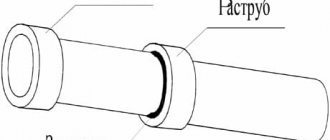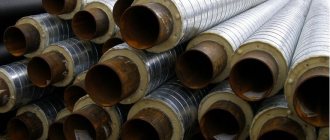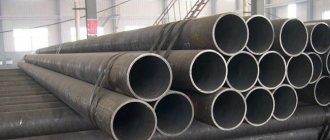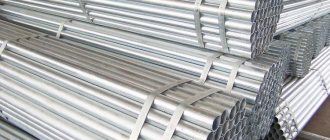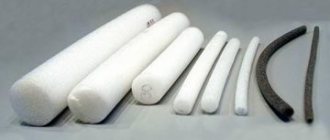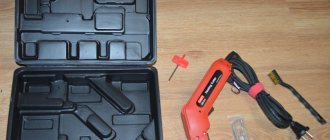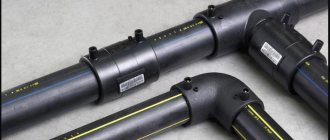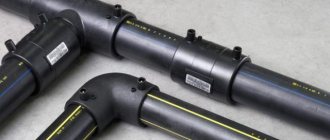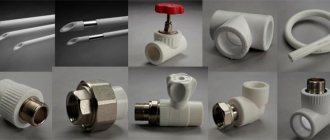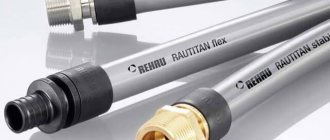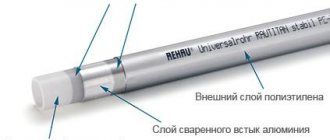Installation and replacement of pipes during plumbing work is not complete without cutting individual elements into fragments of the desired size. The best way to cut a pipe into parts is to use a special tool called a pipe cutter. Using this device, you can cut the pipe with high quality and evenness, getting even, smooth and neat edges at the cutting points. Unlike a simple hacksaw, the pipe cutter works well and quickly, saving you time and effort. You will learn how to choose the right tool and how to use it in this article.
How to choose a pipe cutter
Experienced plumbers know that a pipe cutter is not a universal fixture. Different tools should be used depending on the type and thickness of the pipes. There are pipe cutters that help to work with several types of materials, but certain models are suitable exclusively for a particular type of pipe. For home use, a tool for cutting steel pipes is quite enough. With the help of such a device, you can work both with light plastic and copper structures, and with pipes made of more durable materials. And if you buy a plastic pipe cutter, it will not be possible to use it to cut steel pipes.
To decide what kind of tool you need, you need to familiarize yourself with different types of pipe cutters. We will talk about their classifications further.
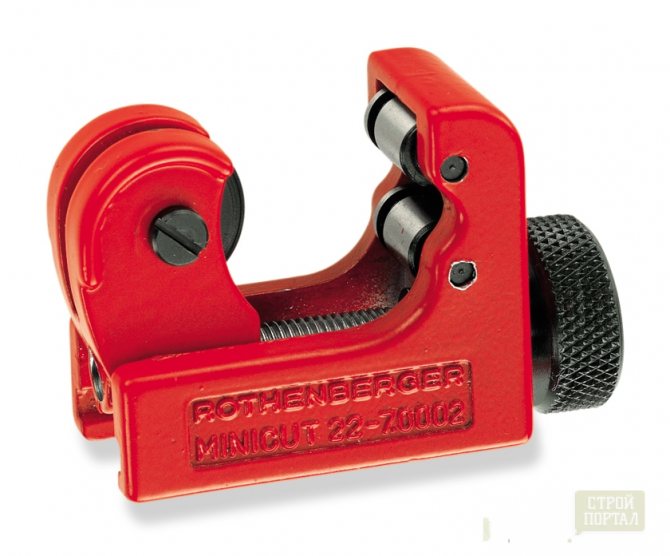
Classification of devices by the thickness of the processed pipes
The right tool should be chosen based on what kind of pipes you will have to work with. In this matter, it is important to take into account not only the material for the manufacture of structures, but also the thickness of their walls. So, depending on the thickness of the pipes, you can choose one of the following types of pipe cutters:
- A tool for working with thin-walled structures. This category includes pipe cutters for copper pipes, metal-plastic, brass, thin stainless steel. As a rule, in this case, roller or cutter-type models are used.
- Pipe cutters for machining thick-walled pipes made of cast iron or steel. Such devices include chain, multi-roll and split pipe cutters.
- The third category is tools that are suitable for working with fragile structures, such as pipes made of concrete or ceramic. In such cases, it is customary to use chain type pipe cutters.
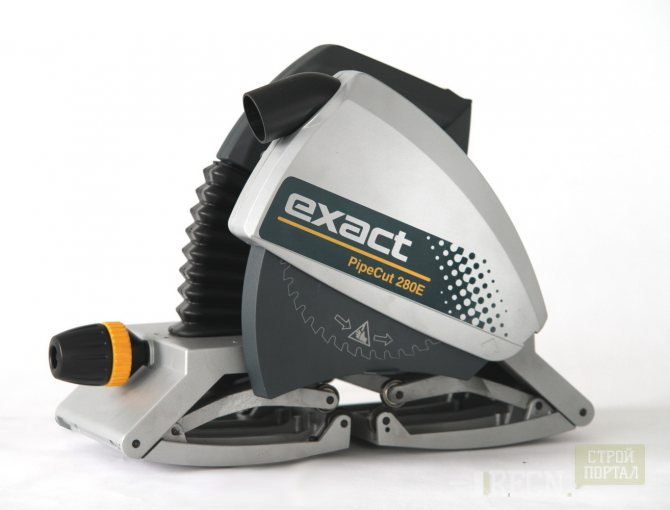

Classification of pipe cutters depending on the type of construction
There are several different types of tools that differ from each other in their design features. Let's consider them in more detail:
- A pipe cutter, often used for cutting plastic pipes, is a kind of clip made of steel. Special durable discs are fixed in it, which ensure cutting of the material. These discs are also made of steel, their position can be adjusted at your discretion. The maximum pipe diameter that this tool can work with is 10 cm. In the process of cutting the pipe, the cut at the end is neat and smooth.
- The manual roller pipe cutter is designed for steel pipes. Such a tool consists of 1-3 rollers responsible for cutting the pipe, as well as guide rollers. The diameter of pipes that can be processed with this device directly depends on the number of rollers. For example, a three-roller pipe cutter can cut structures up to 10 cm in diameter, while a single-roller tool can cut a pipe no wider than 5 cm in diameter.Unlike the previous type, these pipe cutters do not work so neatly, the cut is not very smooth and may contain burrs.
- Chain-type tools help to work with fragile materials: ceramics, concrete, cast iron. These pipe cutters have a tensioning mechanism, swing arms, and chains equipped with cutting rollers. The principle of operation of such a device is quite simple: the chain is tightened around the pipe and cuts into it by turning the levers.
- A rotary or rotary telescopic tool is the most expensive device that allows you to work in the most difficult and adverse conditions, for example, at the bottom of excavations and trenches, as well as under water. The design features of such a pipe cutter are the presence of the same interchangeable rollers that are fixed around the pipe, cutting it. The tool also has a removable handle with which it is moved. The same handle allows you to press down on the cutting rollers during operation. The rotary pipe cutter does an excellent job with the toughest structures with wall thicknesses up to 19 mm.
- For cutting metal-plastic pipes, it is convenient to use tools with a ratchet mechanism. These are small devices that cut thin single-layer pipes. The feature of the ratchet mechanism is that after cutting the material, the blade returns to its original position. However, using such a pipe cutter for pipes with a diameter of more than 3 cm will not work.
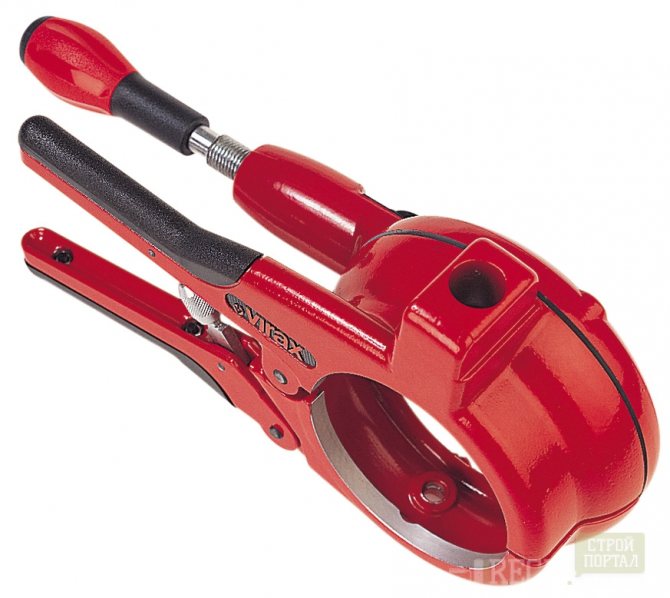

Types of pipe cutters according to the principle of operation
Pipe cutters are also usually classified according to the type of action. Let's consider the different types of tools:
- Manual pipe cutters are usually used for domestic purposes. The principle of operation of such a tool is based on the muscular work of a person. This is the simplest and cheapest type of pipe cutters, in addition, they can be used even by those who do not have specific skills in working with plumbing.
- The electric pipe cutter is equipped with a motor that powers the tool. Such devices are more expensive than manual counterparts, but they are easier and faster to work with. Firstly, the master does not need to apply unnecessary physical strength, and secondly, the process of cutting pipes is much faster. Electric pipe cutters are different: small compact models can be used for household work, and massive units are used in production.
- Hydraulic pipe cutters. Their principle of operation is based on fluid pressure. Such a device is equipped with a piston, a rod, and a hydraulic pump. During operation, the pump exerts pressure on the piston and the pipe cutter is activated. When the water pressure decreases, the incisors return to their original position. Such tools do not need to be connected to the mains, however, their power is noticeably less than that of electric pipe cutters.
- Another type of tool is pneumatic pipe cutters. They are used to work with pipes with a diameter of up to 130 cm. These devices can be equipped with cutters of various types, therefore, such pipe cutters are used both for plastic pipes and for solid cast iron structures. Pneumatic models are not as compact as their electric counterparts. Some tools are large and can weigh up to 60 kg. As a rule, special trolleys for their transportation are sold complete with such pipe cutters.
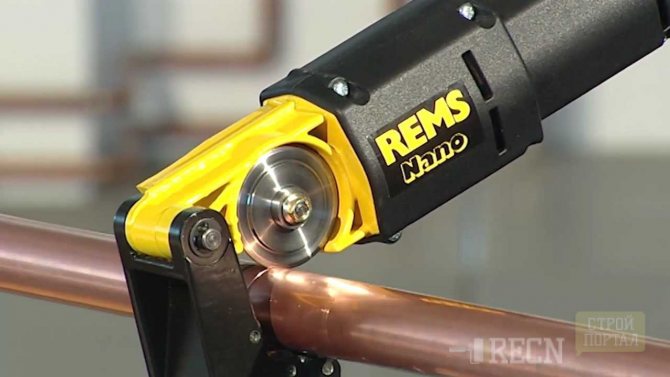

How to choose a tool depending on the material of the pipes being processed
Before purchasing a pipe cutter, you need to consider what kind of pipes you will have to work with. Consider the classification of tools depending on the material being processed:
- Copper pipes have one distinctive feature: they bend and deform easily. To avoid damaging the pipe, the correct cutting tool must be selected.The most suitable options include steel telescopic pipe cutters or ratchet designs. It is better if the tool blade is made of alloy steel.
- Thin plastic pipes lend themselves well to cutting with special scissors. Unlike a pipe cutter, scissors will cost their owner much cheaper, and besides, working with them does not cause any complications. However, if you have a very large scope of work, then with a long use of scissors, your hands will quickly get tired. Among other things, when buying such a tool, you can sometimes come across low-quality models. A cordless polypropylene pipe cutter is also considered a good tool for working with plastic pipes. However, it can handle pipes no larger than 4.2 cm in diameter. Telescopic devices, as well as models with a ratchet mechanism, will also help in working with reinforced plastic pipes.
- Concrete, cast iron, ceramic structures are easiest to cut using chain-type tools - this way you will not damage the fragile material and leave no chips or cracks on it.
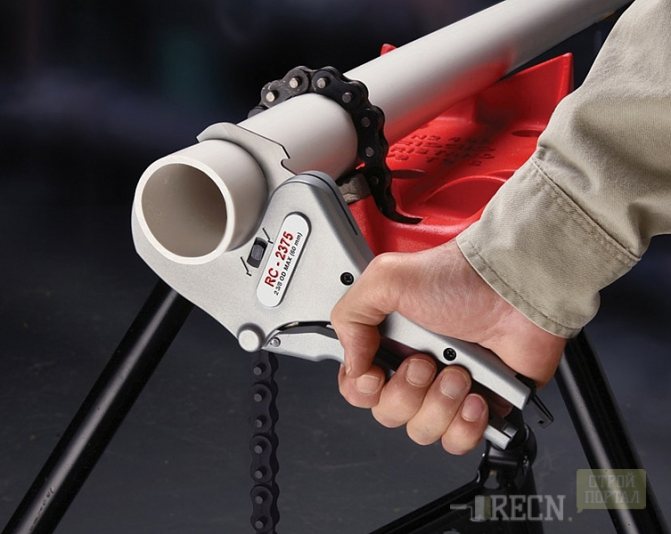

Steel pipe cutter - device and principle of operation
This device is the best way to accurately cut pipes at right angles.
The simplest steel pipe cutter consists of the following elements:
- Cutting roller, which can be of different types depending on the characteristics of the pipe to be cut.
- Latch for rigid attachment of the roller to the frame and housing for its placement.
- The frame is the base in which the roller is placed.
- Feed handle - with its help, the pipe is rotated and cut.
The device is shown schematically in the figure below (disassembled).
The steel pipe cutter works by using the mechanical force of rotation of the feed screw. The pipe is fixed in the frame and secured with clamps on both sides. The screw starts to rotate, as a result of which a groove is formed in the pipe wall, which deepens until the pipe is completely cut off. In this case, the screw of pipe cutters with one roller is rotated a full revolution (360 degrees), and devices with 4 rollers are twisted by 120 degrees, since each of them cuts off its own piece of pipe.
IMPORTANT. In some cases, special metal hacksaws are used to cut pipes. This is especially useful when you just need to get 2 or more fragments from one product. However, if straight edges and a right angle are required (this is especially true for subsequent threading), then a pipe cutter for steel pipes is the only tool that can do the job.
How to use the tool
Consider the features of the operation of pipe cutters using the example of metal and plastic pipes. For the processing of metal structures, a roller pipe cutter is most often used. You need to use it as follows:
- On the pipe, mark the place where you plan to make the cut. Before processing, metal structures must first be wetted using ordinary water.
- Secure the pipe to the tool clamp. To do this, open the pressure block, place the pipe in it, bring the roller to the marked cut line and firmly fix the metal in the pipe cutter.
- Rotate the pressure mechanism, gradually tightening the tension. This will cut the pipe along the line you marked.
The easiest way to cut metal-plastic and polypropylene structures is with a guillotine tool. This is done in several stages:
- First, draw a mark on the pipe where you will cut.
- Spread the handles of the pipe cutter apart and insert the pipe into it.
- Close the handles so that the blade touches the marked line.
- With force, push down on the handle and cut the pipe at the desired location.
Large diameter structures can also be cut with a similar tool, but this will take a little more time.In the process of work, the cutting rollers will have to be moved in a circle until they, cutting into the plastic, finally divide the pipe into parts.
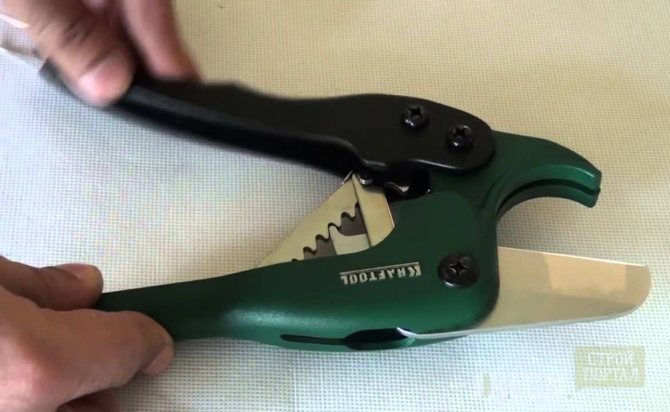

Features of working with copper pipes
Due to its structure and properties, copper pipelines are used in heating, water supply, air conditioning and gas transportation systems. They possess:
- flexibility;
- strength;
- corrosion resistance;
- durability;
- the ability to eliminate bacteria.
The main feature of working with copper pipes is the observance of precautions to maintain the round shape of the products:
- Excessive force from the installer can cause the thin structure to buckle or break.
- When transporting coils with copper pipes, they carefully carry out loading and unloading operations and protect the material from the possible fall of heavy objects.
- When working with copper lines, considerable attention is paid to connecting fittings, installation methods and diameters compliance. Given the ductility of pipes, they can be connected without the use of couplings using the socket method.
We recommend that you familiarize yourself with: How to choose sewer pipes for an external sewage system

